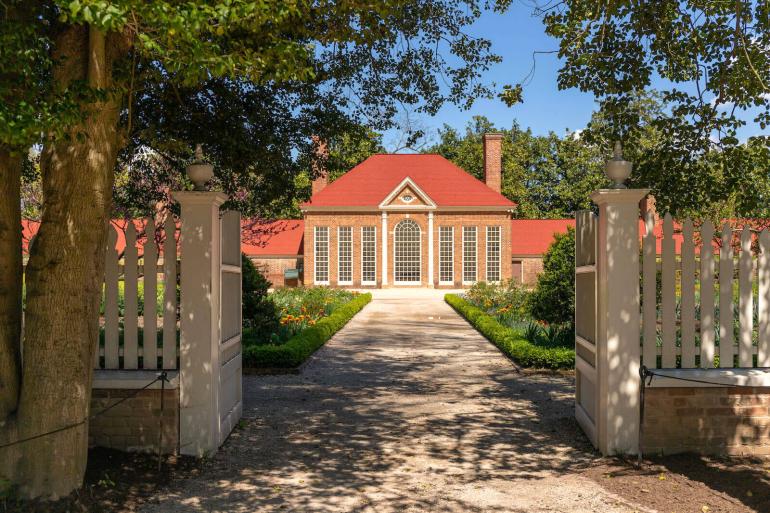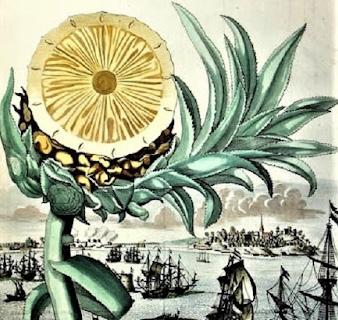Painting of a pineapple grown in Surrey, England, by artist Theodorus Netscher, 1720. Public domain image.

Conquering the Weather
Heated greenhouses were required to grow citrus and other exotic fruit in the Mid-Atlantic region and only the wealthiest families could afford them. In an orangery, an elaborate underfloor heating system enabled potted fruit trees to thrive inside during the cold winter months. Enslaved workers slept in the greenhouses to ensure that fires were tended throughout the night. During warmer weather, the doors were opened and enslaved laborers moved the potted trees outdoors.
Harrison Roberts, who was formally enslaved at Wye House on the Eastern shore, continued to tend that garden into the early twentieth century. Margaret Tilghman Carroll’s relatives lived at Wye House and she would have had knowledge of and access to this orangery, which still stands today. Courtesy of The Star Democrat.
Mount Vernon’s Orangery
Gen. George Washington admired the Carroll’s orangery and requested information through his aide-de-camp, Lt. Col. Tench Tilghman, who was Margaret’s first cousin. Through letters, Margaret who was then a widow, offered her extensive technical knowledge. She also insisted on gifting Washington several mature trees and rare plants, inadvertently annoying the frugal president when he had to hire a boat to transport them.
Through letters, we know that Margaret supplied Gen. Washington with two shaddock (pomello) trees, nine lemon trees, nine orange trees, one “balm scented shrub,” two pots of aloe, and “some tufts of knotted marjoram”.
Status Symbol
A wild plant originating in the Brazilian rainforest, the pineapple became a symbol of exoticism and conspicuous consumption when it was first introduced to Europeans about 1500. To grow them in the Mid-Atlantic region required a special greenhouse called a pinery or stovehouse that would provide artificial heat and light year-round. Enslaved workers would tend the fires day and night.
Possible Pineapple Plagiarism
The Carrolls sought out experienced gardeners as indentured servants. One transported convict named John Adam Smith arrived in 1768 and helped build a pinery for the Carrolls. A visitor to Mount Clare in 1770, Mary Amblin, recorded in her diary that a gardener expected to raise 100 pineapples the following year.
In July, 1769 a “Treatise on the Pine-apple, a New Invention” was published and advertised in England by Adam Taylor, gardener to George Willy, Esq. In May 1772, a strikingly similar advertisement appeared in a Philadelphia newspaper seeking subscribers for a “Treatise on the Pine-apple, a New Invention” for 5 shillings each. The author was identified as John Adam Smith, gardener to Charles Carroll, Esq. Apparently, not enough subscriptions were sold as the treatise was not published. However, less than a year later, the Barrister placed an advertisement looking for Smith who had sought his freedom, or run away, and presumably also taken a treatise on pineapples “which he pretends is of his own writing.”





